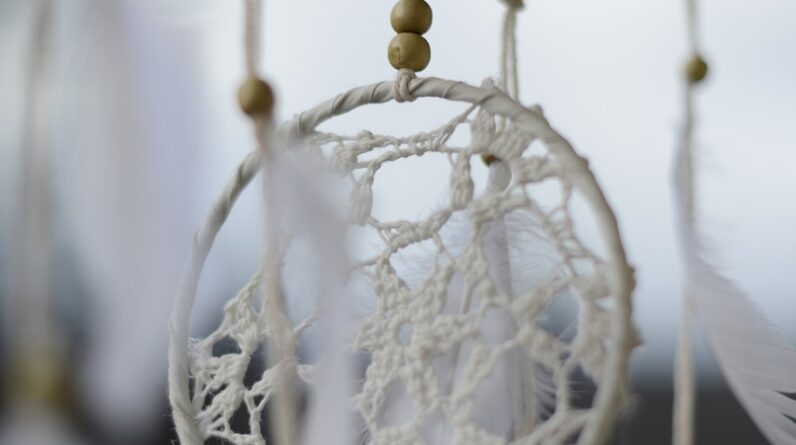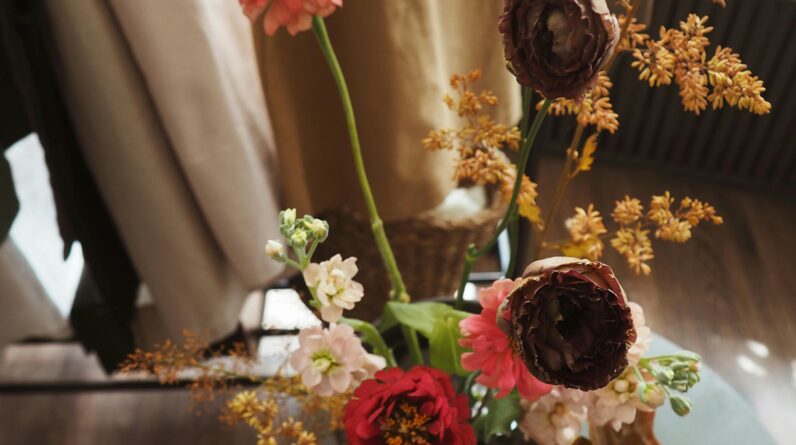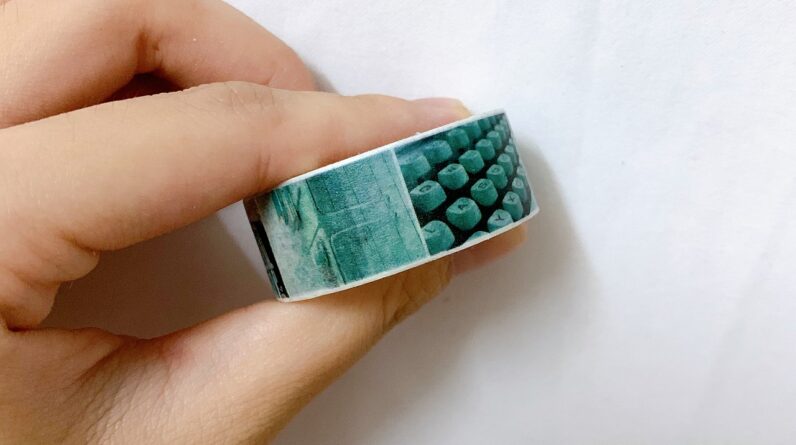
In “The Art of Macramé: Knotting for Beginners,” we explore the timeless craft of macramé and its meditative charm. In this article, we’ll guide you through the basics, from selecting the right materials to mastering fundamental knots that serve as the building blocks for more complex designs. As we unravel the intricacies of this delightful art form, we’ll share tips, tricks, and project ideas that will ignite your creativity and inspire you to create your own beautiful macramé pieces. Let’s embark on this crafty journey together and discover the joy of knotting!
Have you ever wondered how to create beautiful, handcrafted items using just some cord and a few knots? Enter the world of macramé, where the art of knotting can transform simple materials into intricate and functional pieces. From plant hangers and wall hangings to jewelry and bags, macramé offers endless possibilities for creativity.
What is Macramé?
Macramé is a crafting technique that uses knotting, rather than weaving or knitting, to create textiles. Originating from ancient times, this art form has seen a resurgence in popularity thanks to its versatility and the personal touch it brings to home décor and wearable items.
A Brief History
The origins of macramé date back to the 13th century, when Arab weavers used this method to finish the edges of their hand-loomed fabrics. The term itself comes from the Arabic word “migramah,” meaning “fringe.” Macramé made its way to Europe, becoming particularly popular during the Victorian era, and once more found widespread appeal during the 1970s. Today, it’s celebrated again for its bohemian aesthetic and environmental friendliness.
Why Macramé?
What sets macramé apart is its accessibility. You don’t need a lot of tools or materials to get started. With just a few types of knots, you can create a wide variety of projects. Plus, the repetitive nature of knotting can be very therapeutic!
Essential Tools and Materials
Before diving into macramé, it’s essential to understand the tools and materials you’ll need. While macramé is relatively simple in terms of required items, having the right tools can make the process smoother and more enjoyable.
Materials
- Cord: The most crucial material in macramé. Cotton cord is most commonly used because it is soft and easy to work with. Other options include hemp, jute, and nylon.
- Rings: Often made of wood or metal, rings are used as anchor points for projects like plant hangers or wall hangings.
- Beads: Wooden or plastic beads can be incorporated into designs for added flair.
- Dowel or Wooden Branch: These are often used as the base for wall hangings.
Tools
- Scissors: A sharp pair is essential for cutting the cord cleanly.
- Tape Measure: Helps ensure that your cords are cut to the correct length.
- Comb: Handy for fraying the ends of your cords.
- Pins and Pin Board: Useful for securing your work as you create intricate patterns.

Getting Started: Basic Knots
Learning macramé starts with mastering a few foundational knots. Once you’re comfortable with these, you can move on to more complex designs.
Lark’s Head Knot
The Lark’s Head Knot is often the first knot you will encounter in macramé. It’s used to attach your cord to a dowel, ring, or another piece of cord.
- Fold your cord in half and place the loop over the dowel.
- Pull the loop behind the dowel.
- Pull the two ends of the cord through the loop and tighten.
Square Knot
The Square Knot is one of the most fundamental knots in macramé. It’s used in numerous patterns and designs.
- Use four cords: two working cords on the outside and two filler cords in the middle.
- Cross the left working cord over the filler cords and under the right working cord.
- Bring the right working cord under the filler cords and up through the loop created by the left working cord.
- Pull tight, then repeat the process starting from the right side to complete the knot.
Half Hitch Knot
The Half Hitch Knot is another versatile knot that can be used in numerous ways within macramé designs.
- Take the left working cord and place it over the filler cords.
- Bring it around and through the loop you’ve just created.
- Pull tight and repeat on the right side if necessary.
The process might seem complicated at first, but with a little practice, these knots will become second nature.
Step-by-Step Projects for Beginners
Now that we’ve covered the basic knots, let’s dive into some beginner-friendly projects that will help you apply your new skills. These projects are designed to build your confidence and provide you with beautiful items to show off or gift to loved ones.
Project 1: Macramé Keychain
This small project is perfect for practicing your knots and working on a manageable scale.
Materials Needed:
- Cotton cord
- Keyring
- Scissors
Instructions:
- Cut two lengths of cord, each about 30 cm long.
- Attach both lengths of cord to the keyring using Lark’s Head Knots.
- Using the Square Knot technique, create a series of knots to form your design.
- Once you’ve reached your desired length, trim the ends and fray them for a decorative finish.
Project 2: Simple Plant Hanger
A plant hanger is a classic macramé project that instantly adds a touch of bohemian charm to any space.
Materials Needed:
- Cotton cord (about 3-4 meters)
- A metal or wooden ring
- Scissors
- A small plant pot
Instructions:
- Cut six lengths of cord, each about 1 meter long.
- Fold each length in half and attach them to the ring using Lark’s Head Knots.
- Separate the cords into three groups of four.
- Using the Square Knot technique, tie a knot with each group, creating a total of three knots approximately 10 cm from the ring.
- To create the cradle for your plant pot, take cords from adjacent groups and tie another series of Square Knots about 5 cm below the original knots.
- Repeat step 5 until you have three layers of knots.
- Gather all the cords together and tie a large knot at the bottom to hold the plant pot in place.
- Trim any excess cord and fray the ends for decoration.
Project 3: Wall Hanging
A wall hanging can make for stunning home décor.
Materials Needed:
- 1 wooden dowel or branch
- Cotton cord (approx. 4-5 meters)
- Scissors
Instructions:
- Cut ten lengths of cord, each about 60 cm long.
- Attach all ten lengths to the dowel using Lark’s Head Knots.
- Create a series of Square Knots across the cords to form your design. You can experiment with placing knots closer together or further apart for different patterns.
- Continue creating rows of knots until your wall hanging reaches the desired length.
- Trim the ends evenly or into a decorative shape.
- Attach a piece of cord to each end of the dowel to hang your creation.

Tips and Tricks for Macramé Success
Now that you’ve created a few projects, let’s go over some essential tips and tricks to ensure your macramé journey is a successful one.
Choosing the Right Cord
Choosing the right cord for your project is crucial. Beginners should start with a medium thickness cotton cord, as it’s easier to handle and knot. Over time, you can experiment with different types of cord such as hemp or nylon.
Measuring Cord Length
It’s better to overestimate the length of your cord rather than underestimate. Cutting your cords too short can be frustrating, especially if you’re midway through a project. As a rule of thumb, the final length of your project will usually be about four times shorter than the cord you use.
Practice Makes Perfect
Don’t be discouraged if your first few projects don’t turn out perfectly. Macramé requires practice and patience, and with time, you’ll refine your skills and develop your unique style.
Experiment with Different Knots
Once you’ve mastered the basic knots, don’t be afraid to try more complex knotting techniques. Some intricate knots can add variety and depth to your designs. Look up tutorials online or invest in a good macramé book for inspiration.
Keep Your Workspace Organized
An organized workspace can make a significant difference, especially for larger projects. Use pins and a pinboard to secure your work, and keep your materials within easy reach.
Common Mistakes and How to Avoid Them
Even seasoned macramé artists encounter snags, but knowing how to avoid common mistakes can make your crafting journey smoother.
Uneven Tension
Maintaining consistent tension is crucial for a neat project. If your knots are too tight or loose, your design may look uneven. Practice keeping a steady hand and uniform pressure as you knot.
Incorrect Knots
It’s easy to make a wrong turn when learning new knots. Always double-check your steps, and don’t hesitate to refer back to tutorials if you’re unsure.
Measure Twice, Cut Once
One of the most common macramé mistakes is cutting cords too short. Always measure your cords generously and double-check before cutting.
Not Using Enough Knots
For secure and durable projects, using too few knots can result in a flimsy final product. Ensure you’re using enough knots to hold your design together effectively.
Ignoring Finishing Touches
Details matter in macramé. Taking the time to neatly trim and fray the ends of your cords adds a polished look to your projects.

Resources for Continued Learning
Macramé is a vast field with endless learning opportunities. Here are some resources to further refine your skills:
Online Tutorials
Platforms like YouTube and Pinterest are teeming with macramé tutorials that range from beginner to advanced projects. Some channels and boards offer step-by-step guides, making it easier to follow along.
Books and E-Books
Books can provide a structured approach and offer in-depth explanations of techniques. Some recommended titles include “Macramé for Beginners and Beyond” by Amy Mullins and Marnia Ryan-Raison and “Macramé Pattern Book” by Marchen Art.
Workshops and Classes
Local crafting stores often host workshops where you can learn directly from experienced macramé artists. These classes also provide a great way to meet fellow macramé enthusiasts.
Online Communities
Joining online communities such as Facebook groups, Reddit forums, or Instagram pages dedicated to macramé can offer valuable advice, inspiration, and support from fellow crafters.
The Therapeutic Benefits of Macramé
Beyond its aesthetic appeal, engaging in macramé can have various therapeutic benefits. The repetitive motion of knotting can be meditative, helping to reduce stress and anxiety. It can also improve hand-eye coordination and dexterity.
Mindfulness and Relaxation
Macramé requires concentration and focus, making it an excellent activity for practicing mindfulness. The act of creating something tangible with your hands can be deeply satisfying and provide a sense of accomplishment.
Community and Connection
Crafting together can foster connections. Whether you join a workshop, participate in an online group, or simply craft with friends and family, the shared experience can strengthen relationships and create lasting memories.
Advanced Macramé Techniques
Once you’ve mastered the basics, you might want to explore more advanced techniques. These can add complexity and sophistication to your designs.
Double Half Hitch Knot
The Double Half Hitch Knot is perfect for creating intricate patterns and adding detail to your projects.
- Secure one cord taut to act as the holding cord.
- Take another cord (the working cord) and loop it over the holding cord.
- Pull the working cord through the loop and tighten.
- Repeat the process to complete the Double Half Hitch Knot.
Spiral Knot
The Spiral Knot, also known as the DNA Knot or Half Square Knot, creates a beautiful spiral effect.
- Start with a basic Square Knot.
- Repeat the first half of the Square Knot multiple times, always starting on the same side.
- As you continue, the knot will naturally start to spiral.
Adding Multiple Colors
Incorporating multiple colors in your macramé designs can make them more vibrant and eye-catching. You can use different colored cords or dye natural cord to achieve this effect.
Preserving and Caring for Macramé
To ensure your macramé projects last, it’s essential to care for them properly. Here are some tips to keep your creations looking their best:
Cleaning
Most macramé items can be gently hand washed in cool water with mild detergent. Be sure to avoid harsh chemicals and excessive scrubbing.
Drying
Allow your macramé items to air dry, laying them flat to maintain their shape and texture. Avoid direct sunlight to prevent fading.
Storage
Store your macramé projects in a cool, dry place to avoid mold or mildew. Hanging items like plant hangers and wall art in well-ventilated areas can also help maintain their condition.
Final Thoughts
Embarking on your macramé journey can be a rewarding experience. Whether you start with simple keychains or work your way up to elaborate wall hangings, the art of macramé allows you to create beautiful, handmade items while developing a relaxing and therapeutic hobby. As you practice and refine your skills, you’ll discover the limitless potential that comes from a few simple knots and your own creativity.
So, let’s grab our cords, tie our first knots, and watch as simple strands transform into stunning works of art. Happy knotting!







